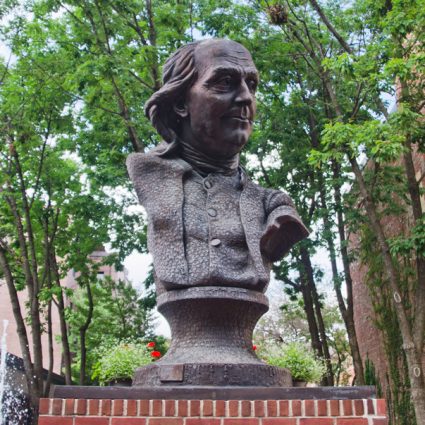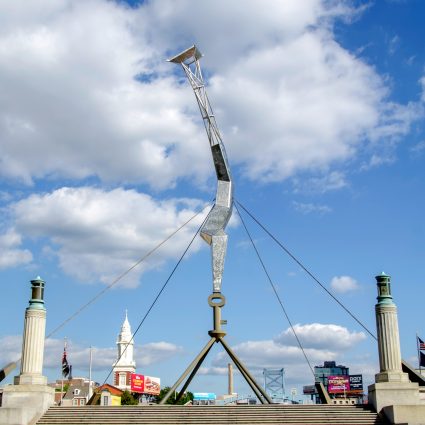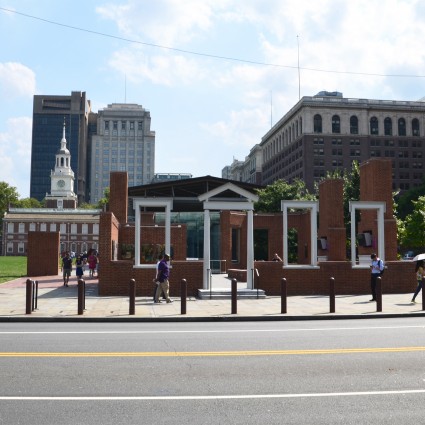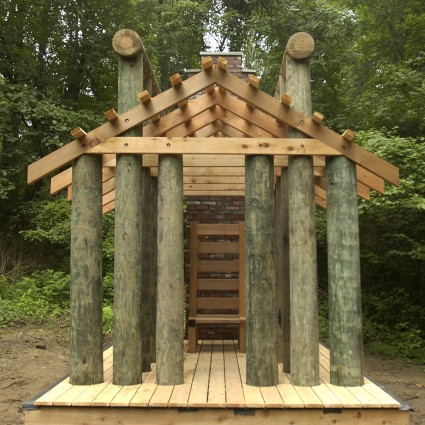At A Glance
The artwork is installed where Benjamin Franklin’s home and print shop once stood
The original structure (razed in 1812) was the only personal residence Benjamin Franklin ever owned
After extensive research and archeological excavations, the National Park Service engaged a Philadelphia architectural firm to convert the property into a memorial to Franklin
Architectural firm Venturi, Scott Brown and Associates (formerly Venturi and Rauch) erected “ghost structures” to suggest the outlines of Franklin’s house and print shop
The only personal residence Benjamin Franklin ever owned stood in a courtyard behind the 300 block of Market Street. There, in 1763, in his fifty-seventh year, he began to build what he described as “a good House contrived to my Mind.” Before the house was finished, he was called away to England on one of the many diplomatic errands that would keep him abroad for most of the revolutionary era;
Architect Robert Venturi and his associates devised a solution that would appeal to the viewer’s own imagination: if the house itself could not be reconstructed, its ghost might appear.
in fact, for the rest of his long life he managed to spend a total of only seven years at home. But Franklin nevertheless left his mark on the property; in addition to planning the original dwelling, he sent letters from abroad with instructions for its furnishing, and he enlarged the structure in 1786 to accommodate his daughter’s growing family. He also built a print shop in the courtyard and three rental houses fronting Market Street.
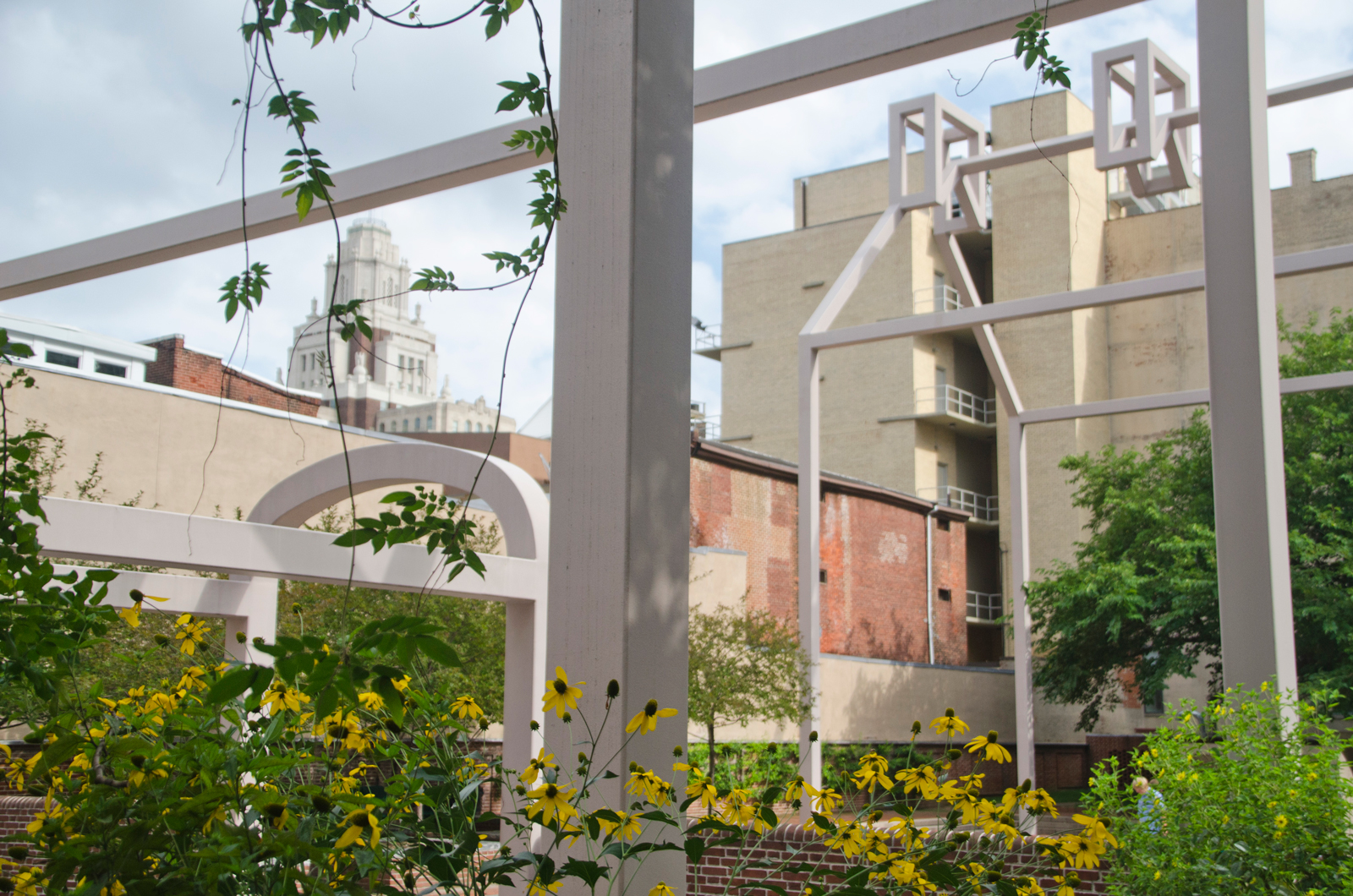
After two decades of historical research and archeological excavations, the National Park Service engaged the Philadelphia architectural firm Venturi, Scott Brown and Associates (formerly Venturi and Rauch) to develop a plan to convert the properties into a Franklin memorial. With John Milner Associates acting as consulting architects, the Market Street buildings were thoroughly restored on the exterior; today they house historical displays, an archeological exhibit, a post office and postal museum, and a working eighteenth-century print shop and bindery. In the courtyard, however, there was little left to “restore”: Franklin’s own “good House” and print shop had been razed in 1812; and despite the years of exhaustive research, few of the architectural details could be discovered.
Faced with this difficulty, architect Robert Venturi and his associates devised a solution that would appeal to the viewer’s own imagination: if the house itself could not be reconstructed, its ghost might appear. Towering “ghost structures” of painted steel frames were erected in the courtyard to suggest the outlines of the house and the print shop. Descriptive quotations were inscribed on the paving, and “viewing wells” were also included to allow visitors to look below ground at what remained of the foundations. Landscaping turned the surrounding courtyard into an eighteenth-century garden, and the architects designed an underground museum below the court. With its combination of historical restoration and evocative sculpture, Franklin Court offers a unique means of exploring Ben Franklin and his times.
Adapted from Public Art in Philadelphia by Penny Balkin Bach (Temple University Press, Philadelphia, 1992).
This artwork is part of the Around Old City tour
